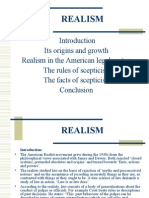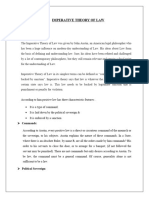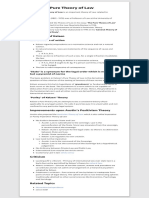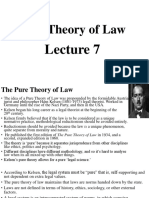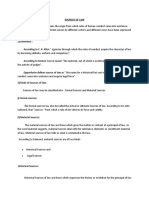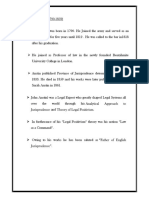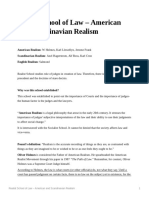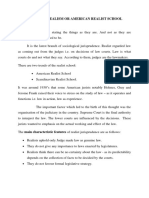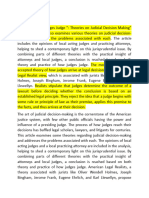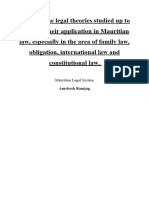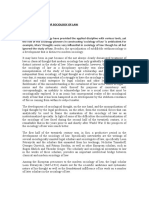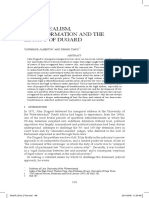100% found this document useful (2 votes)
1K views8 pagesAmerican Legal Realism
American legal realism was a 20th century movement that challenged classical legal thought in the United States. It viewed law as uncertain and continuously evolving based on social, economic and political factors rather than as a static and formalistic system. American legal realists believed that judicial decisions are influenced by judges' backgrounds and political views rather than being derived mechanically from pre-existing legal rules. The realist movement studied the actual effects of legal decisions and emphasized empirical analysis over conceptual reasoning. It aimed to understand law as a tool for social engineering rather than as a deductive science.
Uploaded by
SHIVANI SHUKLACopyright
© © All Rights Reserved
We take content rights seriously. If you suspect this is your content, claim it here.
Available Formats
Download as PPTX, PDF, TXT or read online on Scribd
100% found this document useful (2 votes)
1K views8 pagesAmerican Legal Realism
American legal realism was a 20th century movement that challenged classical legal thought in the United States. It viewed law as uncertain and continuously evolving based on social, economic and political factors rather than as a static and formalistic system. American legal realists believed that judicial decisions are influenced by judges' backgrounds and political views rather than being derived mechanically from pre-existing legal rules. The realist movement studied the actual effects of legal decisions and emphasized empirical analysis over conceptual reasoning. It aimed to understand law as a tool for social engineering rather than as a deductive science.
Uploaded by
SHIVANI SHUKLACopyright
© © All Rights Reserved
We take content rights seriously. If you suspect this is your content, claim it here.
Available Formats
Download as PPTX, PDF, TXT or read online on Scribd
/ 8



